Vermilion Historical Society
History Living On In Vermilion Ohio
Linwood Park - A Vermilion Treasure
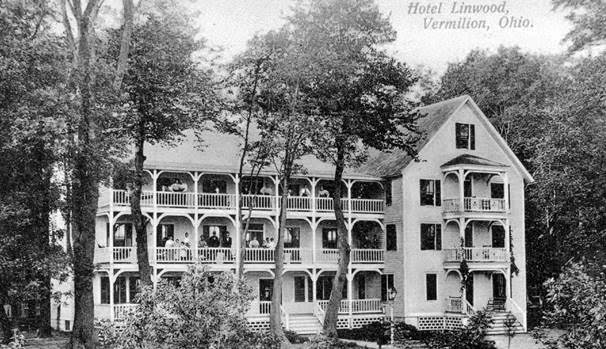 Historic photos of Linwood will be shown on Tuesday July 22 at 7 P.M. at Ritter Public Library. Hotel Linwood was a focal point in the park from 1886 to 1965.
Historic photos of Linwood will be shown on Tuesday July 22 at 7 P.M. at Ritter Public Library. Hotel Linwood was a focal point in the park from 1886 to 1965.
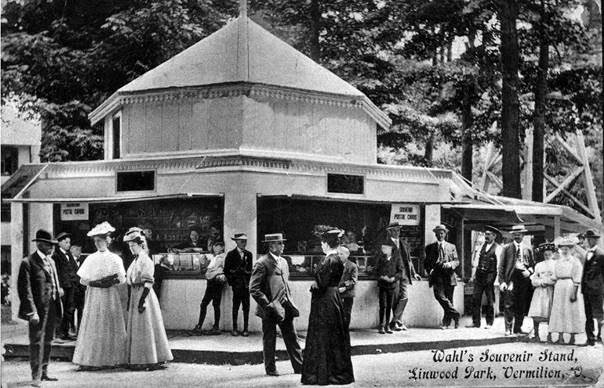 Postcard of Wahl’s Souvenir Stand which sold penny candy, pennants and little porcelain souvenirs from 1901-1917 will be shown at the “Linwood Park-A Vermilion Treasure” program.
Postcard of Wahl’s Souvenir Stand which sold penny candy, pennants and little porcelain souvenirs from 1901-1917 will be shown at the “Linwood Park-A Vermilion Treasure” program.
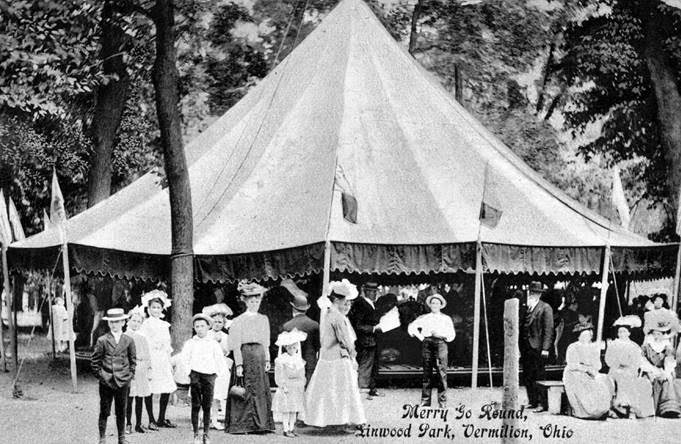 Postcard of the Merry Go Round (1886-1917) operated by Pete Wahl in Linwood Park is included in the narrative history of Linwood Park presented by the Vermilion Historical Society.
Postcard of the Merry Go Round (1886-1917) operated by Pete Wahl in Linwood Park is included in the narrative history of Linwood Park presented by the Vermilion Historical Society.
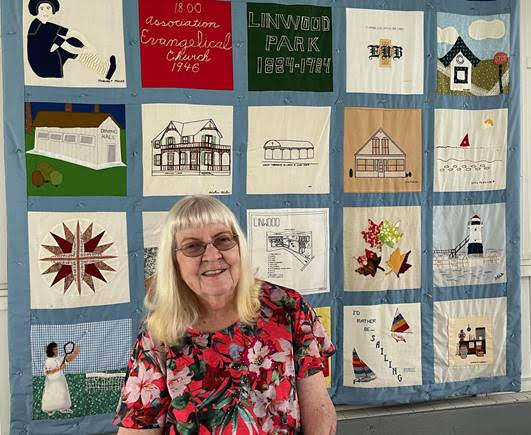 Karen Boas, Linwood Park historian and author, stands in front of one of the Centennial Quilts made in 1984. She was instrumental in organizing the making and assembling of the squares created by cottage owners, park residents and visitors.
Karen Boas, Linwood Park historian and author, stands in front of one of the Centennial Quilts made in 1984. She was instrumental in organizing the making and assembling of the squares created by cottage owners, park residents and visitors.
The Vermilion Historical Society will present the “Linwood Park – A Vermilion Treasure” program on Tuesday, July 22 at 7 p.m. in the Ritter Public Library, 5680 Liberty Avenue, lower level.
In partnership with the library and the Vermilion History Museum, the program will feature a video narrative of the history of Linwood Park incorporated in 1883. The narrative is based on the book Through These Gates and Down the Path: Linwood Park by historian Karen Boas.
According to Linwood Park’s website: a historic community where bicycles and baby strollers outnumber the cars on quiet, shaded streets. The relaxing atmosphere feels like a step back in time, when summer floated along at a slower pace. Amenities include quaint cottages, private beach, tree-lined grove park, lakefront playground, ice cream stand, and more — are free from modern-day commercialization, favoring a more timeless, peaceful experience.
It was the fall of 1883 when Karen Boas’ great grandfather, Henry Bickel, drove his buggy from his farm in Black River (now Lorain) to Vermilion to see the land for which he had pledged money as a camp meeting ground. He built a cottage and was on the first board of directors of the Linwood Park Company in 1884.
Boas’ parents first took her to Linwood in 1947 when she was an infant to open the family cottage for the summer. Boas is now a year-round resident.
“In 1980 while visiting with friends and viewing an extensive collection of old photographs, someone had commented that the Centennial was coming up in four years and someone should write a history of Linwood”, Boas reminisced. Being a history major, she decided to undertake the task.
She talked with Franklin Seith and Sara and Harvey Crass, three of the early pioneers of Linwood. “They were tremendous help remembering in incredible detail the early days of the park” stated Boas.
She viewed family albums and memorabilia. Then spent countless hours researching in the courthouse and innumerable libraries, historical societies and archives around the country.
“My breakthrough came when I obtained access to the minutes of the Linwood Park Company, from 1883 to the present. Everything was there in detail. A major stumbling block was the first 600 pages were in old German Script which was discontinued in 1939 which very few people can read.” Boas recounted. She then obtained the services of translators.
Glen Cutcher, Vermilion Historical Society member, has compiled the narrative history of Linwood Park with numerous historical photographs from Karen Boas’ book and from postcards in the society’s collection.
The presentation is free and open to the public.
For more information email: VermilionHistoricalSociety@
Memories of Old Vermilion
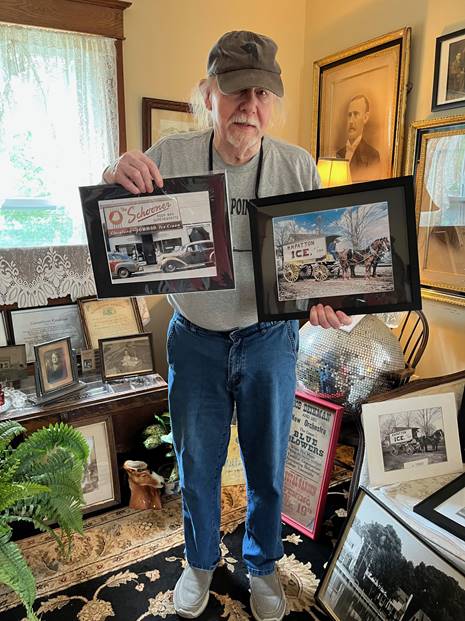 Rich Tarrant, curator of the Vermilion History Museum, is surrounded by photos that he has collected in the last 25 years.
Rich Tarrant, curator of the Vermilion History Museum, is surrounded by photos that he has collected in the last 25 years.
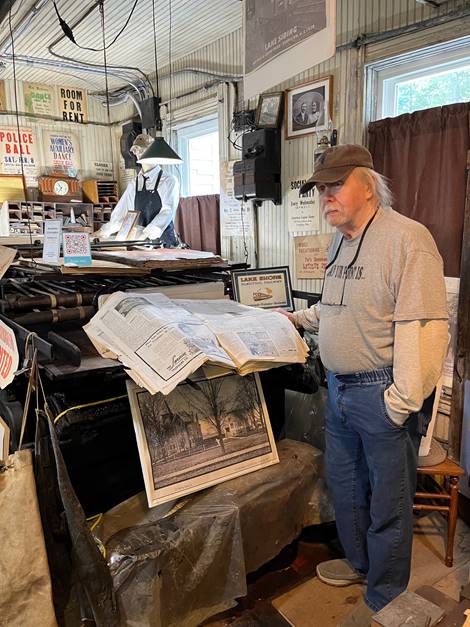 Standing by one of the printing presses in the Vermilion History Museum is Rich Tarrant who will give a presentation of his old photos collection on June 24th.
Standing by one of the printing presses in the Vermilion History Museum is Rich Tarrant who will give a presentation of his old photos collection on June 24th.
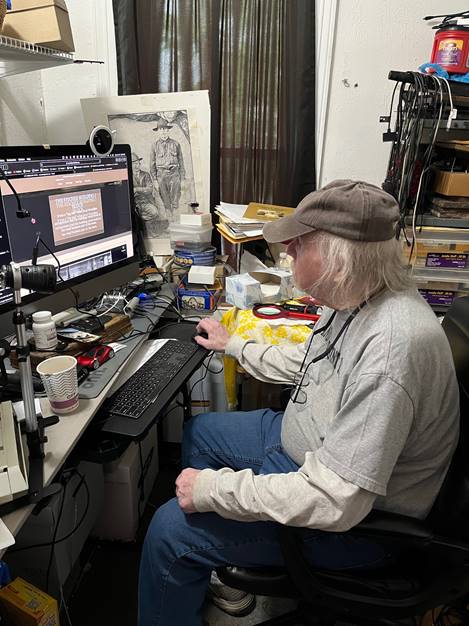 Working daily at his computer, Rich Tarrant has collected thousands of old photos of Vermilion.
Working daily at his computer, Rich Tarrant has collected thousands of old photos of Vermilion.
The Vermilion Historical Society in partnership with the Vermilion History Museum and Ritter Public Library will present “Vermilion Historic Pix” a video narrative of old Vermilion photos by Rich Tarrant.
Tarrant, curator of the Vermilion History Museum, has been actively collecting, researching and writing about Vermilion’s history for over 25 years. He has published three books, created numerous audio recordings and movies and collected thousands of old and not so old photographs of Vermilion.
“Old News is Good News” the motto of the museum was created by Tarrant who loves to share his knowledge of Vermilion.
In 1900 Pearl Roscoe, Tarrant’s grandfather, purchased the Vermilion News weekly. He was the printer, editor, and newspaper publisher until his death in 1946. Roscoe was an avid photographer and created a wonderful record of people and places in Vermilion.
Tarrant has developed over 350 of the over 500 glass negatives that his grandfather created. The video will reveal some of Roscoe’s treasured photos and with an historical narrative.
The video will be shown at the Ritter Public Library, lower level, on Tuesday, June 24 at 7:00 pm. These remembrances are free and open to the public to enjoy. For more information email: [email protected].
Vermilion Historical Society Celebrates 20th Calendar Edition
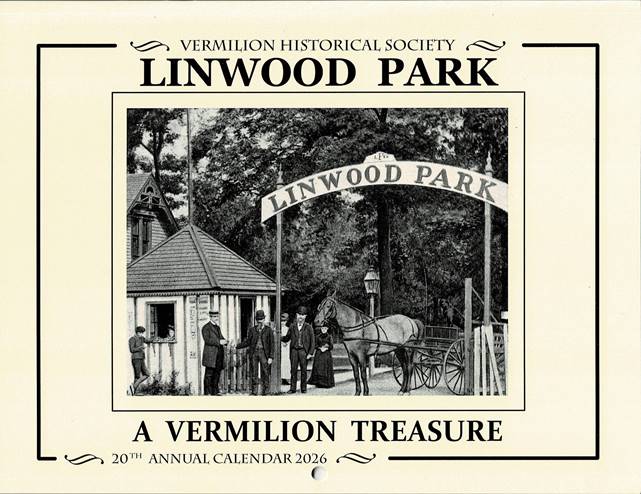 “Linwood Park - A Vermilion Treasure” is the 2026 theme of the Vermilion Historical Society’s 20th calendar. Historic photos included are the Old Bell Tower, Bath House, Wahl’s Souvenir Stand, Merry Go Round, German Tabernacle, Chapel and more. Linwood Park is like entering another world filled with history and nostalgia.
“Linwood Park - A Vermilion Treasure” is the 2026 theme of the Vermilion Historical Society’s 20th calendar. Historic photos included are the Old Bell Tower, Bath House, Wahl’s Souvenir Stand, Merry Go Round, German Tabernacle, Chapel and more. Linwood Park is like entering another world filled with history and nostalgia.
The calendar committee meets in February to decide on the theme for the calendar. Once a subject has been chosen the committee members are given assignments to find photos and write descriptions for them. Committee members are Walter Baughman, Glen Cutcher, Candy Fischer, Judy Gutman and Margaret Wakefield Worcester.
Glen Cutcher creates the print-ready graphic layout for the calendar. Judy Gutman and Candy Fischer, the proofreaders, remember the rules of grammar and spelling instilled in them by their high school English teacher, Lorna Schroeder. Gutman said, “She definitely left an impression on us!”
The Society sells the calendars for $5.00 as a fund raising project. Proceeds are used to purchase archival quality supplies to preserve historical materials in their collection. This year 38 businesses and individuals sponsored the printing of the calendar which enables the sale of calendars to be pure profit.
Calendars are available for sale at Brummers Chocolates, Vermilion History Museum and Linwood Park Store/Museum. Calendars are also available by mail for $8.50 by sending a check to the Vermilion Historical Society, 5680 Liberty Avenue, Vermilion, OH 44089.
Vermilion History Museum
Discover the History of Vermilion Ohio
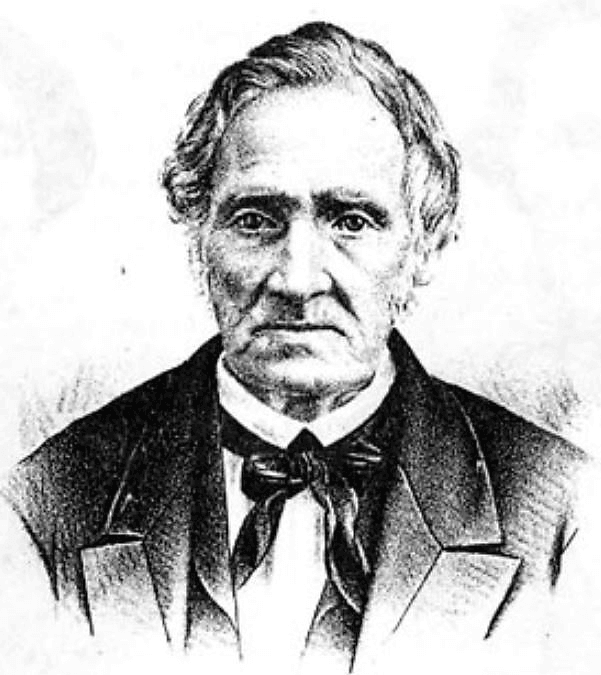
Settlers & Incorporation
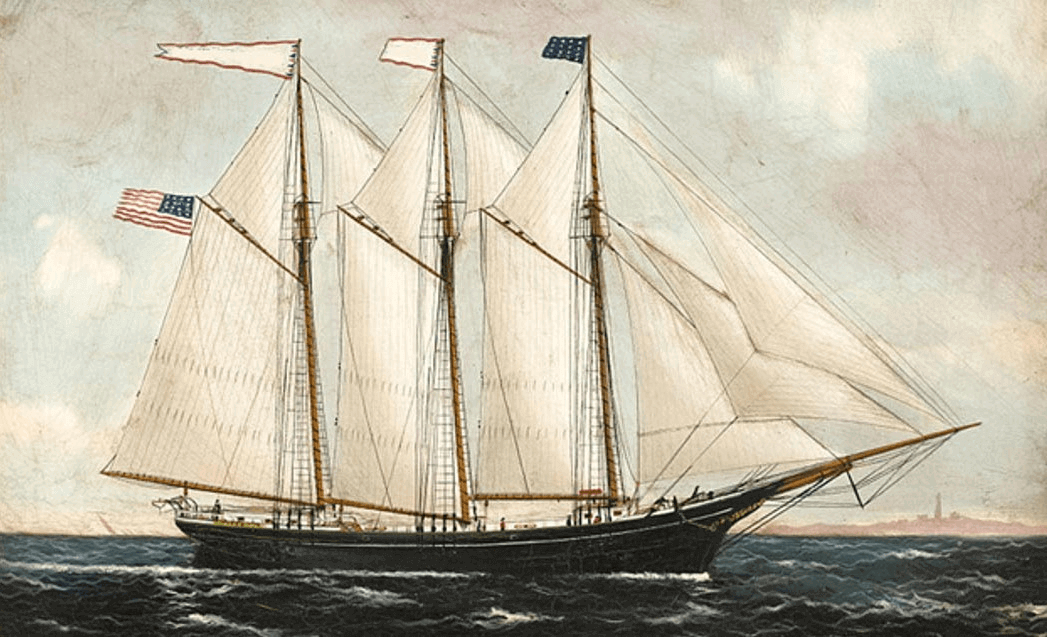
Vermilion River & Industries
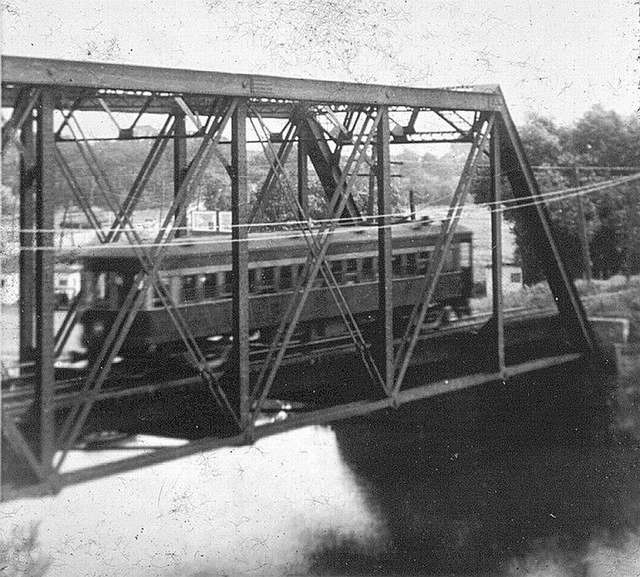
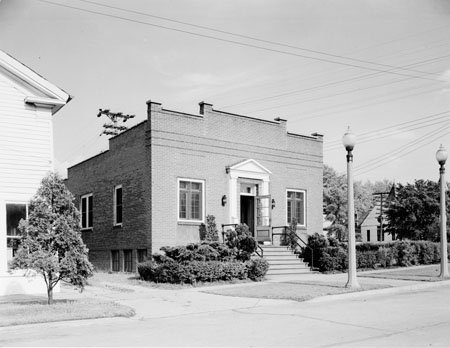
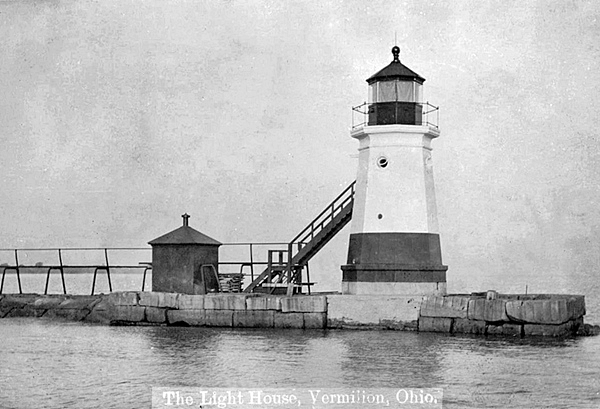

 Recreation
Recreation
